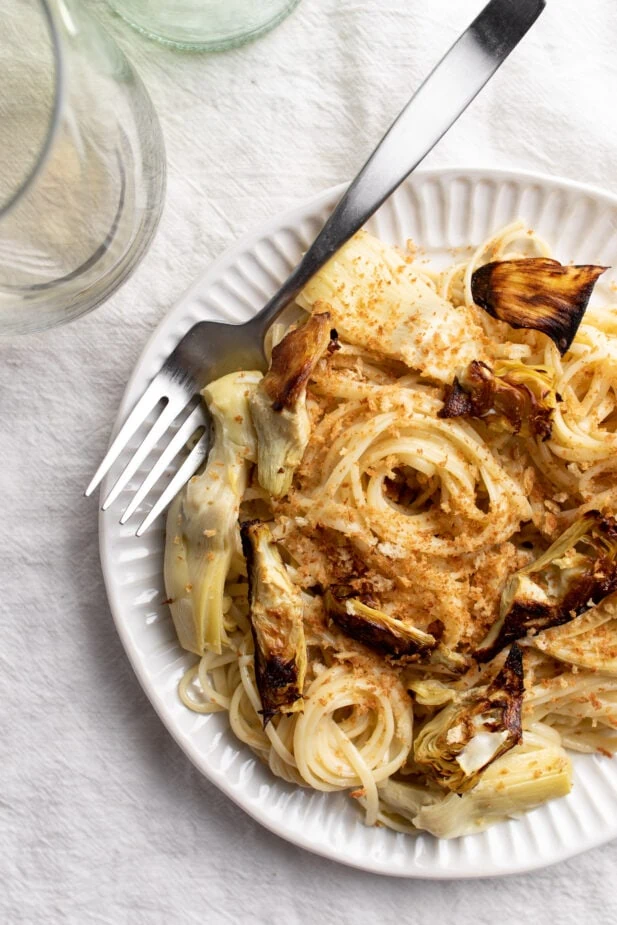 January 6, 2022
Under 30 Minutes
January 6, 2022
Under 30 Minutes  January 6, 2022
Under 30 Minutes
January 6, 2022
Under 30 Minutes If I have learned one thing is that people love risotto. This, dare I call it, superior carb is a blank canvas for endless flavor profiles. Once you learn how to make it, you can really make it anyway you like, or come here for risotto inspiration. Like my other risotto recipes, this quick and easy dish can in fact be made without that constant stirring arm workout.
This risotto is a play on my Lemon Caper Pasta…. and all my other lemon caper recipes. What can I say I love a good briny lemon combo. These little pops of salt and lemon flavor add so much brightness to a dish however adding out of the jar capers here didn’t feel right. Once fried these capers lose a lot of their vinegar taste and instead are nutty and crispy. Please don’t skip out on these. I know frying can be intimidating so below are some tips on frying these little buggers.
Use a Small Pot – The smaller the pot the less oil you need to use. You are looking for about an inch of oil.
Drain and Dry – Make sure the capers are absolutely dry before slotting them in the hot oil. Lay the capers out on a few layers of paper towels and pat dry. Any moisture left on them will cause the oil to violently bubble, and splatter.
Multiple rounds – Don’t be impatient here, fry a single layer of capers at a time. Depending on how many you are making this might be 2-3 rounds of frying.
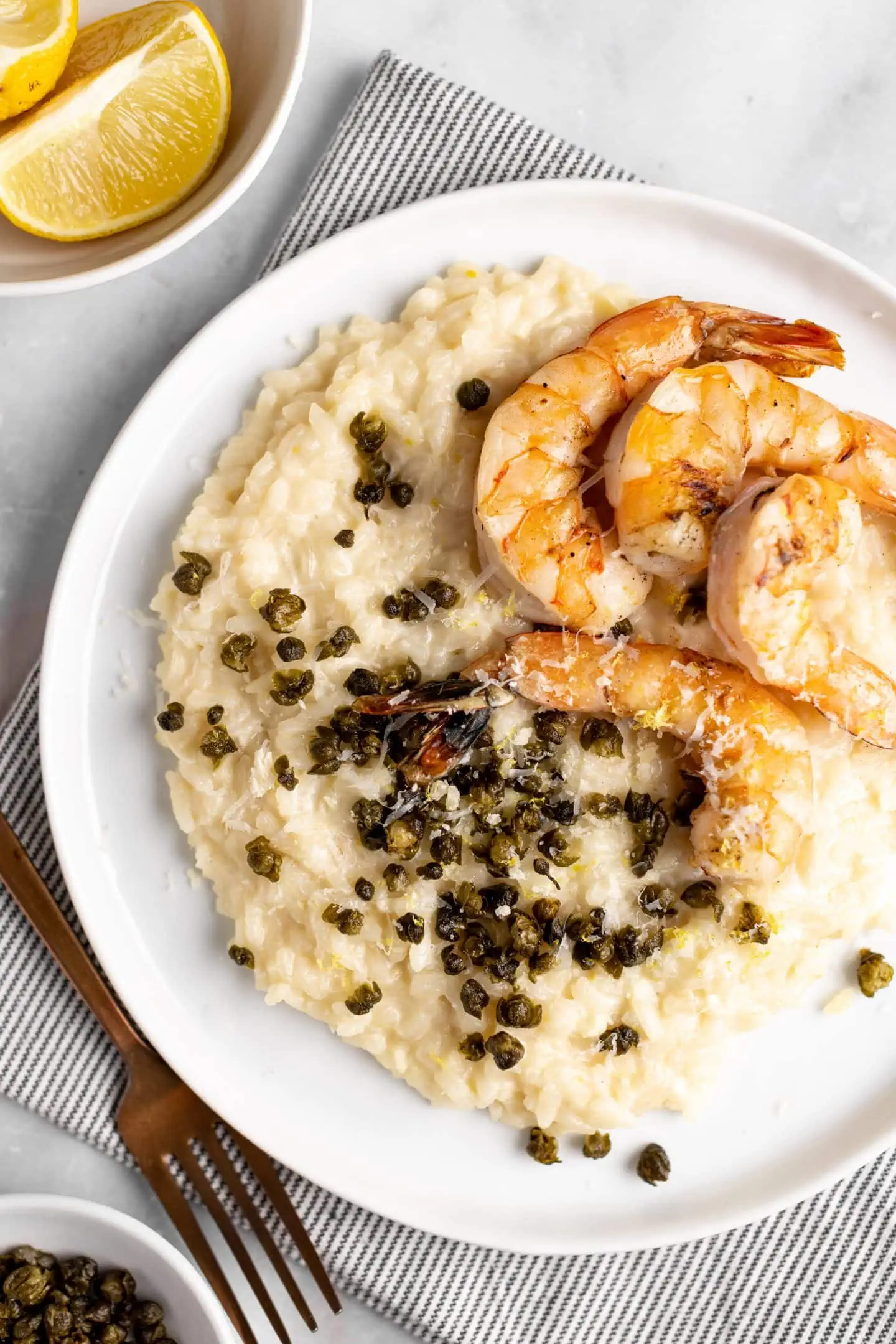
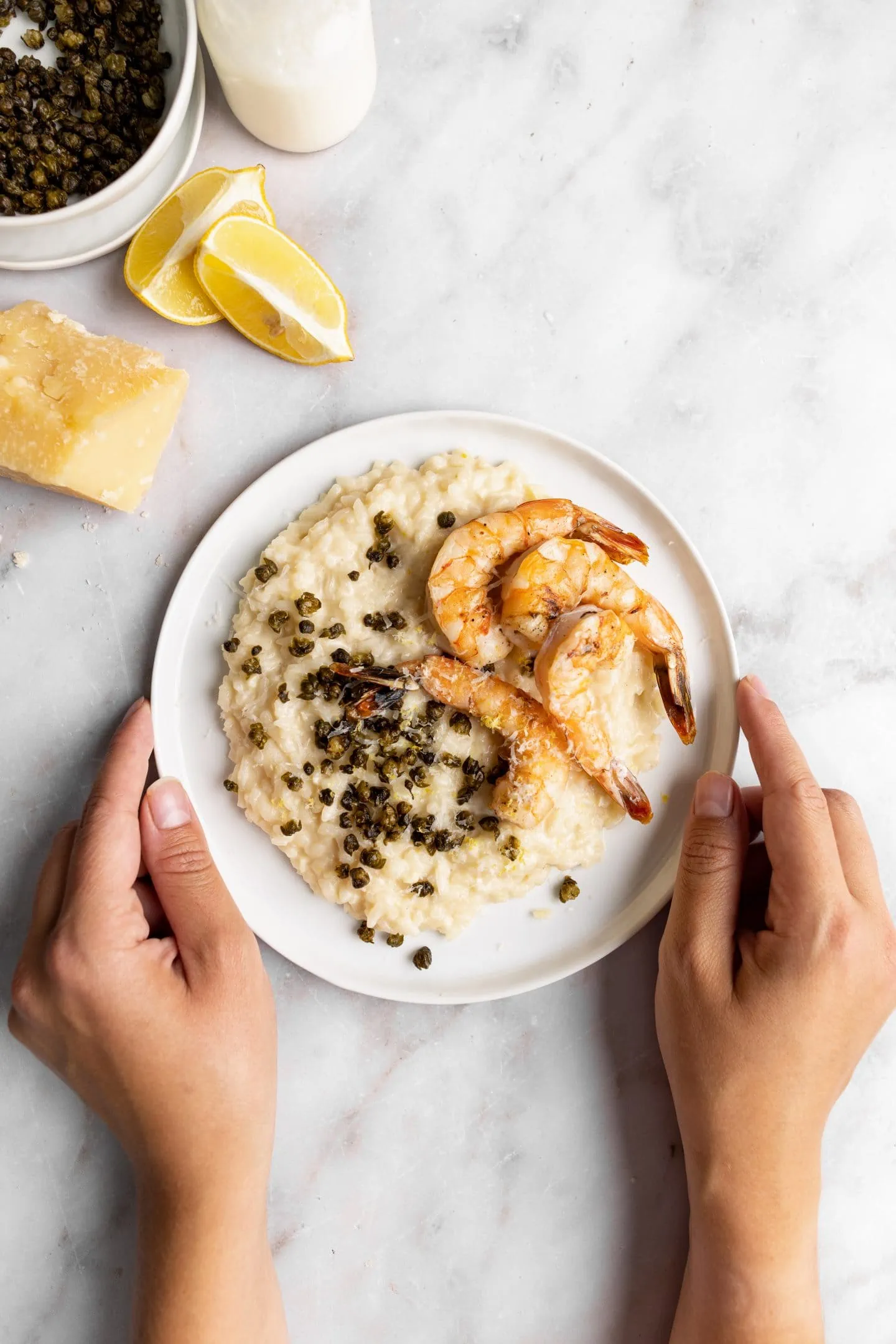
If you already know how to make risotto, skip ahead and read the recipe or even better make it! If you only know how to make risotto by constantly stirring read below. I will say this in every risotto post i put up, you do not need to constantly stir! In fact if you over stir, your risotto can and will get gluey.
Sauté the base – Add butter or olive oil to a wide pot or pan on low heat. Sauté the onions, garlic, shallots, whatever the base might be. This is also the place to cook down heartier vegetables.
Toast the risotto – Add the dry not washed rice to the pan and toast it for 3-5 minutes until grains start to become translucent. I can not stress enough do not wash the rice beforehand, this will completely strip the rice of the starches it needs to make this dish super creamy.
Add wine or broth – If adding wine (optional) deglaze the pan and cook for another 2-3 minutes until the alcohol cooks off. Have your broth in a sauce pan on the stove to stay warm. When you are ready add the broth, but not all at once! For every cup of risotto you need approx 4 cups of broth. Have extra on hand! I found with different brands of arborio rice I needed + or – a cup. Depending on your pan this might be split into 3 or 4 rounds. My rule of thumb is to pour just enough broth to cover the risotto.
Mix, Add, Shake – Mix 2-3 times per broth add. If you end up mixing more, no biggie! Also give the pan a mix or a shake midway to ensure the rice isn’t sticking to the bottom. Once broth has mostly absorbed add more broth until all broth has been used.
Final Adds – In the last few minutes add the cheese, cream, and more delicate vegetables or precooked protein (ie. lobster or crab).
Risotto should be creamy, and loose. The rice should not be mushy, but shouldn’t be crunchy either. If it is crunchy add more broth and keep cooking. Keep in mind it will firm up more the longer it sits out so eat immediately!
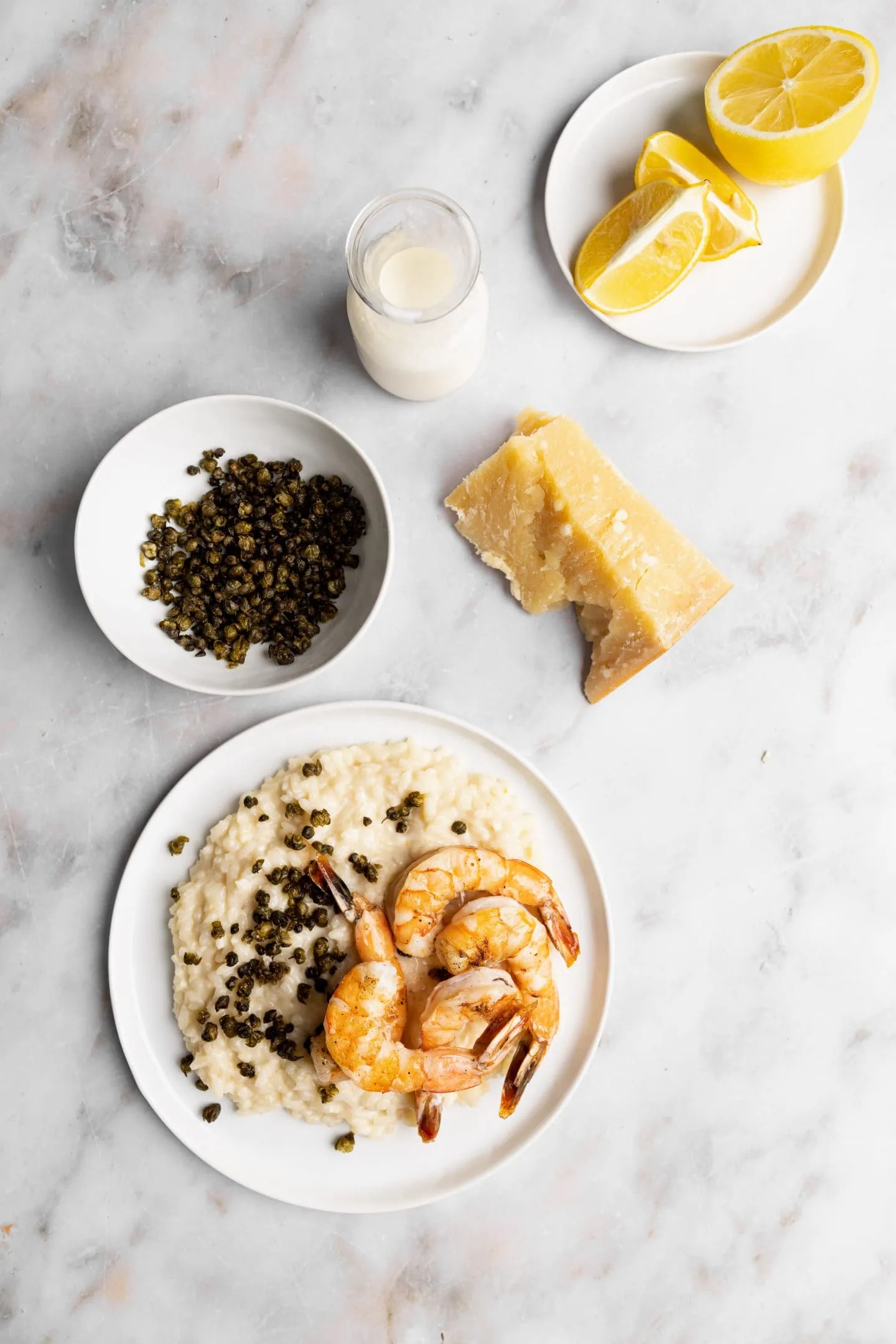
This is the part of the risotto post where I tell you that it won’t bounce back the same way. Risotto is meant to be enjoyed immediately, so please enjoy it right away. Any leftovers can be stored in the fridge for 2-3 days in an airtight container.
Looking for more recipes with a similar flavor profile as this risotto? Check out the below!
Lemon Caper Salmon
Chicken Piccata Meatballs
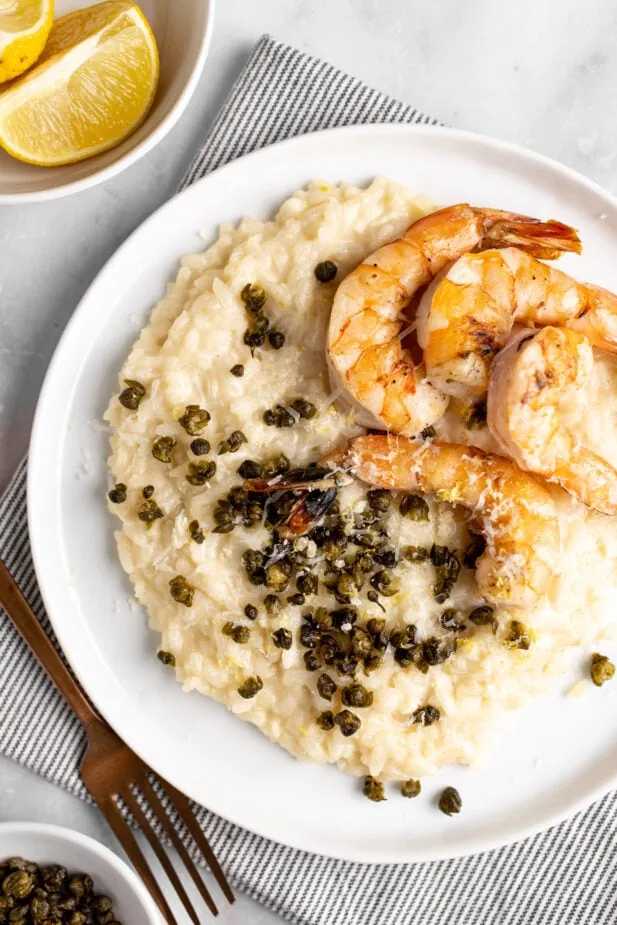
RATE + REVIEW What did you think of this recipe?